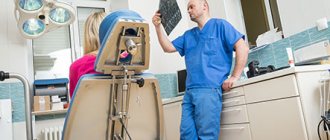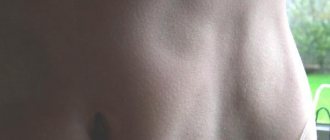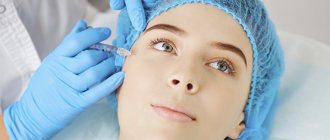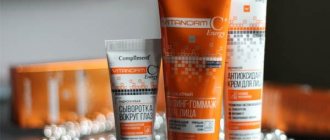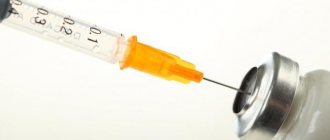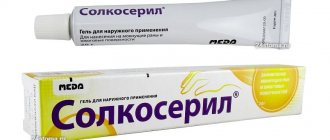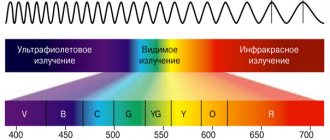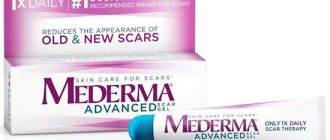- Department of Plastic Surgery
Department of Plastic Surgery » - Center for Reconstructive Plastic Surgery
Center for Reconstructive Plastic Surgery »
- Articles by our doctors
Articles by our doctors »
- Autotransplantation of adipose tissue in reconstructive and plastic surgery
Scientific and practical journal “Oncology Issues”, 2015. No. 3
The author of the article is Semyon Igorevich Fedosov, reconstructive plastic surgeon at the RAMI clinic.
- Introduction
- Main part
- conclusions
Indications for use
Autologous tooth transplantation may be necessary in the following cases:
- tooth loss due to injury;
- the need for removal due to widespread caries (deep type);
- congenital absence of a tooth when there was no germ;
- removal is done for orthodontic purposes, since the tooth affects the malocclusion.
You can find cases of transplanting your own tooth in childhood or adolescence. This is due to the fact that implantation is contraindicated before the age of 18, since the jaw bones are growing and are not yet fully formed. And the survival rate of your own tooth is almost the same as that of an implant, and with a good outcome of the operation, it will grow and develop along with its owner. The work of the orthopedist will move the teeth so that the empty space of the taken donor will not be noticeable.
conclusions
Indications for the use of lipofilling are aesthetically significant deformations of the contours of the face and body that cannot be corrected by more radical methods of surgical plastic surgery.
The developed method of sampling and transplantation of one's own adipose tissue most closely meets the principles of transplantology, ensuring maximum graft survival.
In all cases of using fat tissue transplantation as an additional corrective technique in reconstructive surgery of the mammary glands, excellent aesthetic results were achieved. Elimination of contour deformation was achieved in 70% of patients with primary lipofilling. The percentage of positive results increases with repeated lipofilling. In areas of subcutaneous scarring, the effect of the operation is less stable.
The use of adipose tissue as an additional technique in reconstructive surgery is safe, practical, and effective.
Unpredictable engraftment of transplanted fat, loss of up to 40% of the graft in the recipient area due to insufficient revascularization is the main disadvantage of autologous fat tissue transplantation.
If you are really looking for your doctor...
Contraindications for carrying out
First of all, a young patient must be psychologically ready for autotransplantation; it is much easier for adults to take this step. The procedure cannot be performed if:
- there is not enough space between adjacent teeth to restore the void with a dental graft;
- bone diseases can interfere with survival;
- local inflammation in the oral cavity;
- psychological diseases;
- autoimmune diseases, diabetes, cardiovascular problems,
- poor oral hygiene.
How it is carried out: stages of treatment
Autotransplantation requires a tooth with healthy characteristics. For these purposes, a rudiment with a dental follicle, which contains cells ready for growth and development of the root system, works very well. Wisdom teeth are taken to replace 6 and 7; if the front tooth is injured, then any suitable 4.5 can be taken. Often, for upper losses, the donor is the lower teeth, because the lower tissues are restored well.
- Diagnostics. X-rays and CT scans are used to evaluate the condition of the jaw bone and tooth roots;
- Creation of a computer model of the donor tooth. It is printed on a 3D printer based on CT data;
- Extraction of an infected or decayed tooth;
- Treatment of the hole with an antiseptic and antibiotic. If the place has been empty for a long time, the hole is formed surgically;
- Trying on a 3D model of the tooth so that the shape of the hole for the roots fits perfectly;
- Removal of a healthy tooth or germ. One of the important points is to preserve the ligamentous apparatus. The success of donor integration depends on its viability;
- Transplantation of the removed tooth to a prepared site. The time between extraction and installation should be no more than 25 minutes for the donor tissue to function normally;
- Splinting and suturing.
After a few days, the sutures are removed, and after 25 days, the splints are removed. Then the orthopedic correction begins.
Autologous bone marrow transplantation
Autologous bone marrow transplantation, also called autologous stem cell transplantation, is a treatment for certain types of cancer. For example, for leukemia, multiple myeloma, or some types of lymphoma. Doctors also treat some blood disorders with stem cell transplants.
In the past, a stem cell transplant was more often called a bone marrow transplant because the stem cells were collected from the bone marrow. Today, stem cells are usually collected from blood rather than bone marrow. For this reason, they are now often called stem cell transplants.
Bone marrow is the soft, spongy tissue inside bones. It contains cells called “hematopoietic stem cells.” These cells can turn into several other types of cells.
Some cancers and other diseases prevent hematopoietic stem cells from developing normally. A stem cell transplant provides the recipient with new stem cells. New stem cells can make new, healthy blood cells.
Autologous stem cell transplantation is mainly used for primary refractory or relapsed Hodgkin Lymphoma.
With autologous transplantation, the recipient receives his own stem cells after doctors have begun treating cancer. First, the medical team must collect stem cells from the blood and freeze them. Next, the patient undergoes powerful chemotherapy and, rarely, radiation therapy. Then, doctors thaw the frozen stem cells. They put them back into the blood through a tube placed in a vein (IV).
This takes about 24 hours, during which time the stem cells will be able to reach the bone marrow. They then begin to grow, multiply, and help the bone marrow make the blood cells healthy again.
Expert opinion
Igor Yurievich Malinovsky
Maxillofacial surgeon, implantologist
Experience: more than 11 years
Transplanting teeth from one area to another is not widespread. The risks of complications are quite high; the tooth may not take root. And it is morally difficult for the patient to experience psychological stress again. Especially considering that these are often children - teenagers, boys and girls. Among dentists there is no clear opinion on this method of restoration. And I am also inclined towards temporary prosthetics, until the time when it will be possible to put reliable and comfortable crowns on the implants. Of course, it is worth mentioning that autologous dental transplantation should not even be considered for older patients.
Autologous bone grafting
In orthopedic medicine, autologous bone graft can be obtained from the patient himself in order to fill the space and create an osteogenic response in the bone defect. Autografts have long been considered the “gold standard” in maxillofacial surgery and implantology, as they provide the best regeneration results. Recently, the introduction of morphogen-enhanced bone grafts has shown similar success rates and quality of regeneration, but their cost is still very high.
How much does a tooth transplant cost?
Each dental clinic sets its own prices for autotransplantation. And the price depends on the status of the center, the qualifications of the doctor, the complexity of the operation: whether the removal will take place during the operation or whether the work will take place in an already empty place, the anterior or chewing units will be replaced. But on average, transplanting your own tooth will cost from 25,000 to 45,000 rubles.
It seems that transplanting your own organ to yourself is much cheaper. Since there are no costs for expensive materials: implant, abutment and crown, or the work of a dental technician. “Everything is yours” as they say. But the price is not much lower than implantation.
Autotransplantation for Hodgkin's lymphoma
Although patients with recurrent Hodgkin's disease have a poor prognosis with conventional treatments, high-dose chemotherapy and autologous hematopoietic stem cell transplantation (autotransplantation) can provide long-term progression-free survival. Data from the Autologous Blood and Bone Marrow Transplant Registry (ABMTR) were reviewed to determine relapse, disease-free survival, overall survival, and prognostic factors in this patient population.
Detailed data from 414 patients with Hodgkin's disease at first relapse (N = 295) or second complete remission (CR) (N = 119) treated with autograft from 1989 to 1995 were reviewed. Average age is 29 years (range 7-64 years). The median time from diagnosis to relapse was 18 (range, 6-219) months, the median time from relapse to transplantation was 5 (range, <1-215) months. Most patients received high-dose chemotherapy without total body irradiation for conditioning (N = 370). The most commonly used high-dose regimen was cyclophosphamide, BCNU, VP-16 (CBV) (N = 240). The graft consisted of bone marrow (N = 246), blood stem cells (N = 112), or both (N = 56). Median follow-up was 46 (range, 5-96) months. The 100-day mortality rate (95% confidence interval) was 7 (5-9)%. One hundred sixty-five of 295 patients (56%) transplanted at relapse achieved CR after autologous transplantation. Of these, 61 (37%) repeated. Twenty-four of 119 patients (20%) were transplanted for recurrent CR.
The probability of disease-free survival at 3 years was 46 (40-52)% for grafts in the first remission and 64 (53-72)% in the second remission (p < 0.001). Overall survival at 3 years was 58 (52-64)% after transplantation in the first relapse and 75 (66-83)% after transplantation in the second relapse (p < 0.001). On multivariate analysis, Karnofsky score <90% at transplant, abnormal LDH level at transplant, and chemotherapy resistance were unfavorable prognostic factors for outcome. Progression of Hodgkin's disease accounted for 69% of all deaths.
Autotransplantation should be considered in patients with Hodgkin's disease in first relapse or second remission. All patients must undergo a recovery period! Future research should focus on strategies to reduce recurrence after autologous transplantation, especially in patients at high risk of relapse.
What are the alternatives?
Instead of autotransplantation in dentistry, there is a choice - implantation or prosthetics.
Implantation allows you to install an artificial root into the hole and load it with a prosthesis, a crown. The implant is made of titanium alloy and has a surface treated in a special way, which allows it to take root with 99% success. The manufacturer provides a lifetime warranty on many implants.
Prosthetics will help hide the empty space using an orthopedic design. The bridge will be supported by supporting teeth and perform an aesthetic function.
Autotransplantation of the spleen
When performing splenectomy, the only way to preserve splenic function is autotransplantation. The most commonly used method of splenic autotransplantation in humans is the implantation of several sections of splenic parenchyma into sacs created in the greater omentum. However, this autotransplantation technique is associated with complications.
Although the effectiveness of splenic autotransplantation is debated, this approach remains the only option to preserve splenic function after traumatic splenectomy.
Experimental studies continue to add valuable information to ongoing autotransplantation research, providing a basis for future studies in humans and adding to the argument for autotransplantation when the spleen cannot be preserved.

